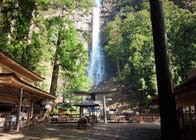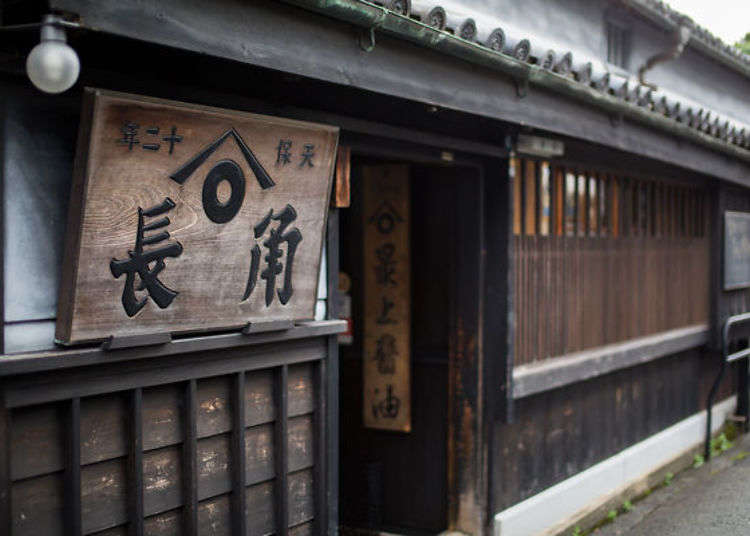
Yuasa Town in Wakayama Prefecture is a prosperous old-style Japanese village. It's also a perfect place to stay for the Kumano Kodo or if you're traveling to Kumano Sanzan. It’s also famous as the birthplace of shoyu (soy sauce).
A stroll through the town is like a walk back in time. The buildings' distinctive lines of eaves date back to the Edo or Meiji periods.
Yuasa is a town of about 20 square kilometers in the western part of the Kii Peninsula. Yuasa is located behind an inlet with good sea access and has flourished as a distribution hub since ancient times. It’s also famous for the manufacture of soy sauce. Over 90 shoyu breweries were opened here in the early 1800s.
It was designated as a Preservation District for Historic Buildings by MEXT (Ministry of Education, Culture, Sports, Science, and Technology) in 2006. It still retains vestiges of the Edo and Meiji periods to this day. It has gained an increased profile as a tourist spot in recent years, a place to experience the tradition and historic atmosphere of shoyu brewing.
Take a stroll through historic Yuasa Japan!
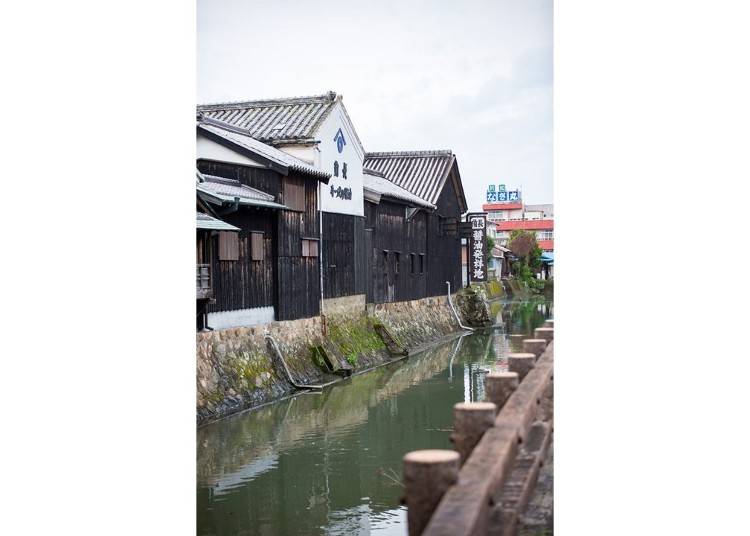
This is the reason why I have come to visit Yuasa’s Preservation District! Old-fashioned warehouse buildings line the canals that lead from Daisenbori.
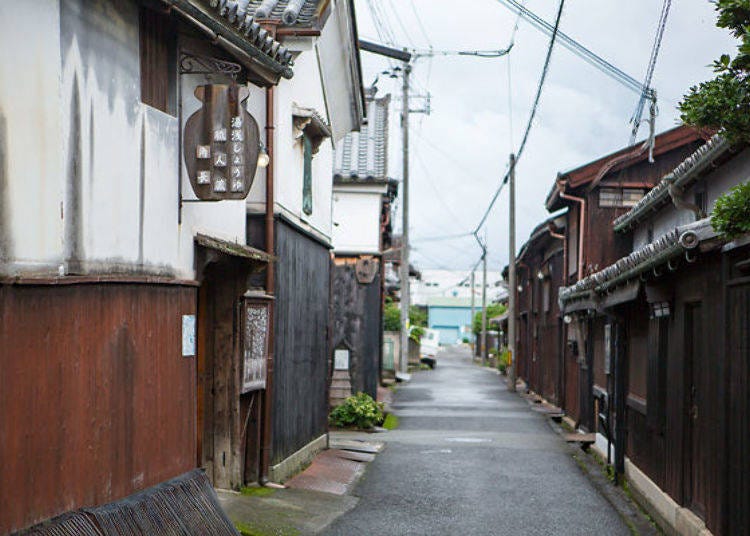
Kitamachi-dori which runs behind Daisenbori is the main street of the walking course for this area. It’s lined with rows of historic houses.
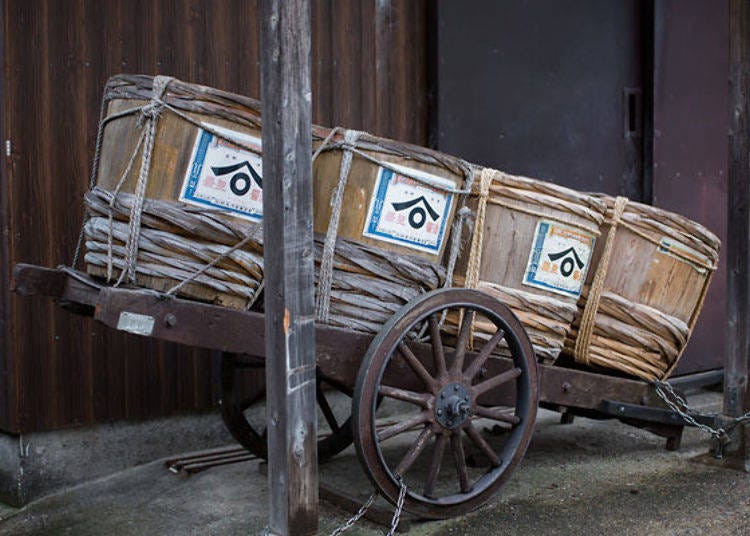
The buildings and scenery remind you of the town’s soy sauce heritage. Here, you can listen to the guides of the Yuasa Volunteer Guides Association as they tell you the history of the town and its buildings.
I made a reservation and went to meet my guide at the designated meeting point.
(Reservations are required. Fee: 300 yen for individuals/3,000 yen for tour groups, including tax).
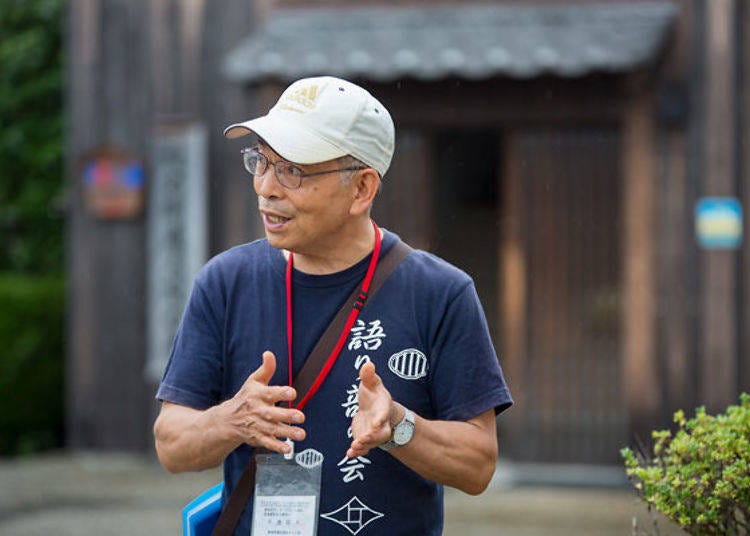
“Pleased to meet you.” I meet my guide for today, Sougo Hanbe, in front of the Kitanomachi Community Center.
Mr. Hanbe is Vice Chairman of the Yuasa Traditional District Preservation Society. He started volunteering as a guide in 2006 because he was keen to spread the message about the beauty of the town and its old buildings. He still lives in Yuasa Town, and there’s nothing about this town that he doesn’t know!
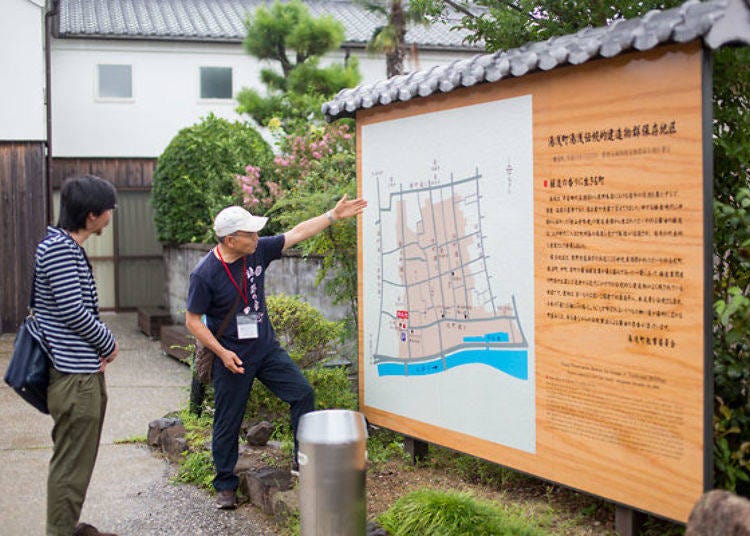
“The buildings round here have survived intact since the Edo and Meiji periods. Naturally, some of them have been repaired or rebuilt along the way. And lots of people still live in them or run their businesses here.”
Mr. Hanbe starts by giving me an overview of the history of Yuasa Town. I’m surprised that these historic buildings, which have been so carefully preserved, are still so actively used today.
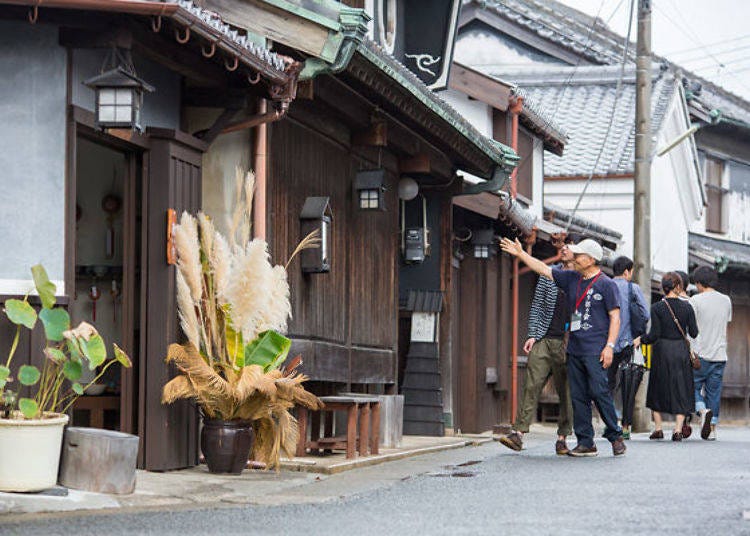
Then we start to walk along Kitamachi-dori. Mr. Hanbe tells me about each building in turn as we walk. He is a mine of information. I’m amazed by how much he knows.
“This building dates back to.....” “The key features of buildings of this period are...” He talks cheerfully without having to pause and think.
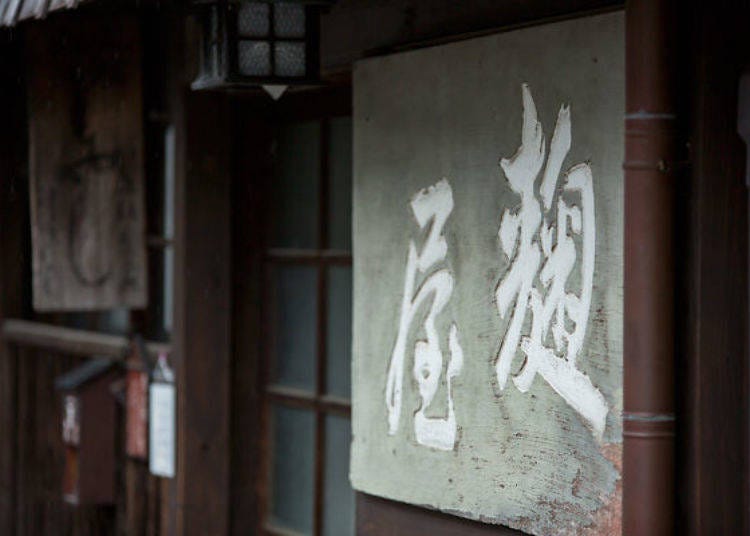
Kinzanji miso was introduced to this area during the Kamakura period. It is a kind of soy bean miso paste. Fermentation technology developed in the area subsequently, and soy sauce was created in the process. Thus the area became renowned for the manufacture of soy sauce during the Edo period.
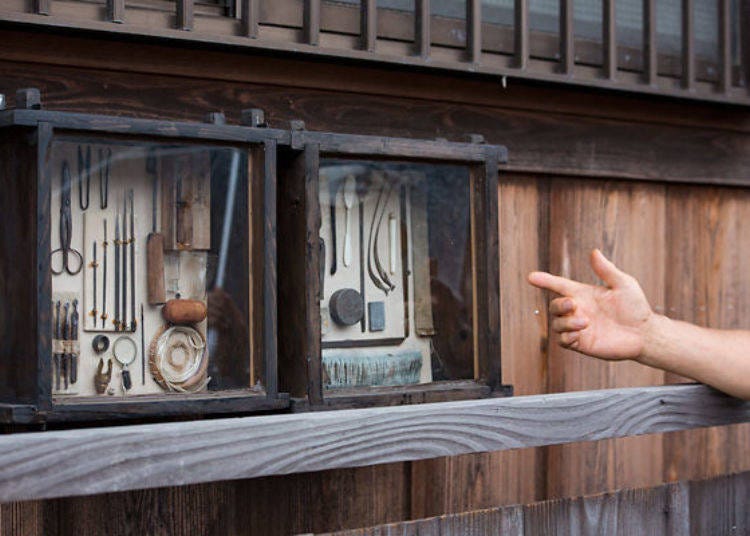
“You see a lot of these around. These cooking utensils, seiro, were used for steaming food in ancient times. So this is known as the Seiro Museum.”
A display cabinet is set in the outside wall like a lattice window beneath the eaves. You can see similar displays everywhere in the houses along the street.
“The residents were asked to cooperate by putting on display any items they had in their houses that they felt would be of interest.”
There are all sorts of different items on show – for example, small paintings conjuring up the atmosphere of a bygone era or tools used by doctors in the Edo period.
It’s as if the whole town is one big museum. All the different exhibits on display as we walk around the town make for a stylish display.
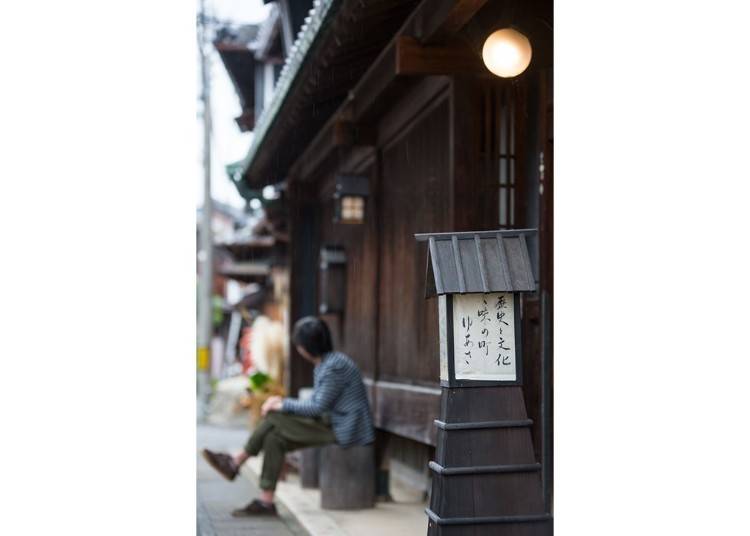
Every house on the street resonates with history, each with its own story to tell. My spirits are lifted by seeing the lattice windows and paper lanterns. You don’t find these in modern homes.
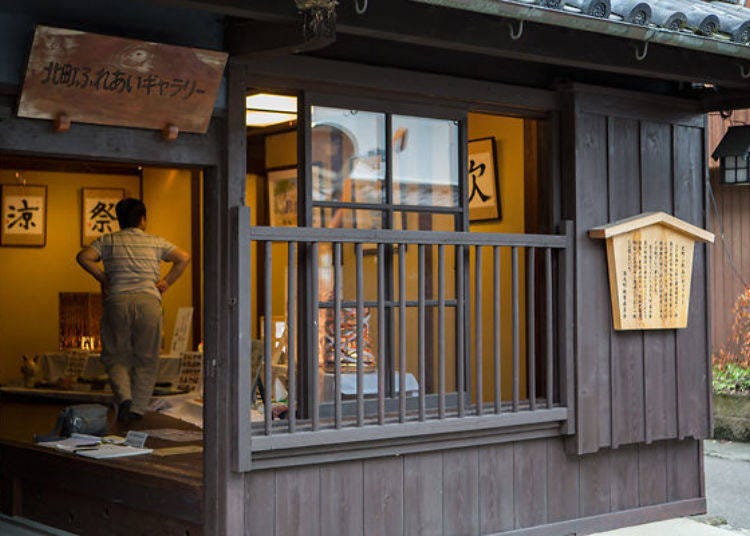
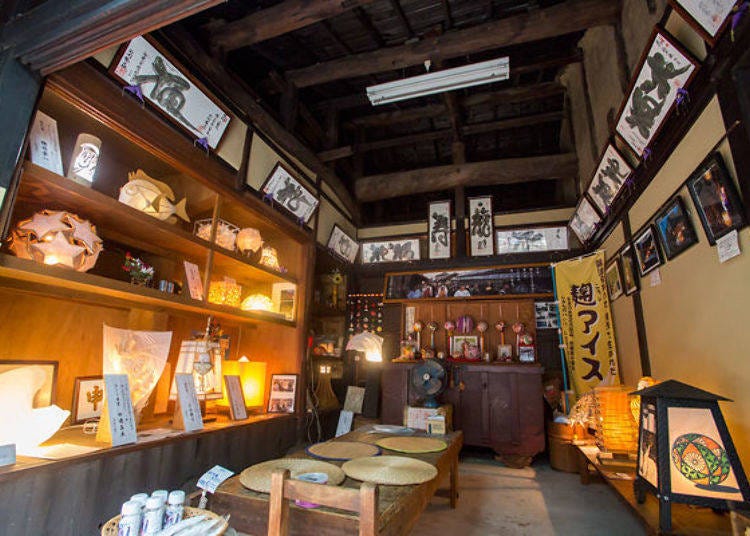
Mr. Hanbe tells me, “We’re currently in discussion about what can be done with the unoccupied houses. We want to help tourists to enjoy the area more, while continuing to respect the needs of those who live here at the moment.”
There are plenty of interesting things to see on the streets as well as the old buildings and the Seiro Museum, such as galleries and tea shops. Tourists are welcome to stop and browse wherever they choose.
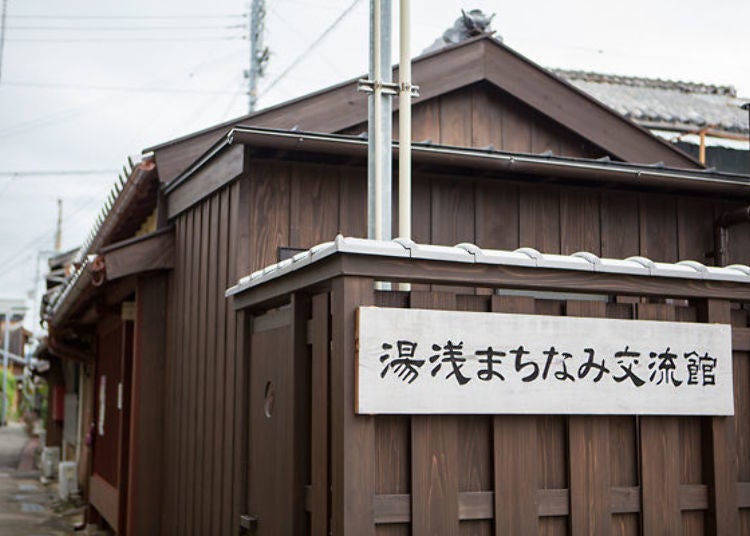
Experience the tradition of soy sauce making at Kadocho, the long-established shoyu manufacturer
As we walk up the street, Mr. Hanbe tells me, “Behind here is the store and warehouse of Kadocho, the famous soy sauce maker. It is a long-established shop which has been producing shoyu here since it was founded in 1841.”
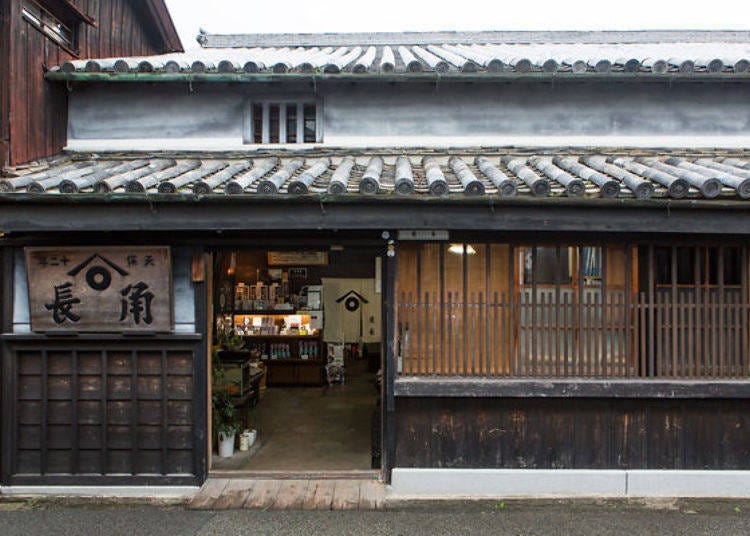
The characters on the store sign testify to its age - Kadocho Tenpo 12 (1841). I hesitate as I step inside the building, mindful of the rarified atmosphere.
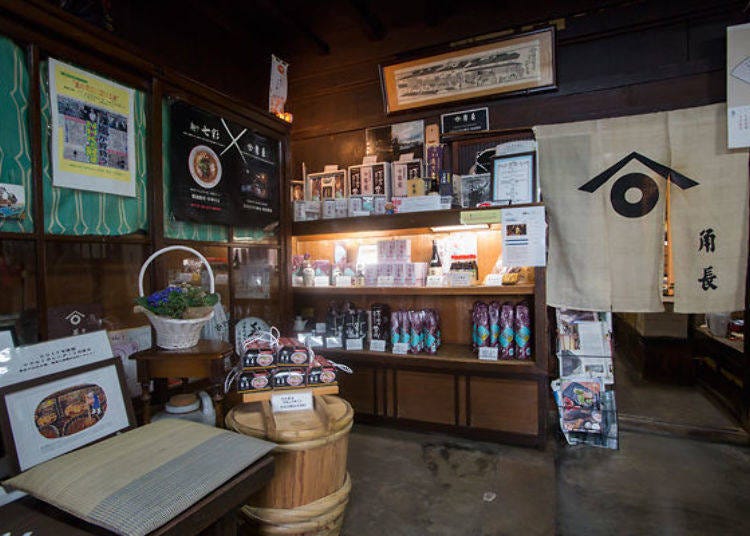
“Welcome. Please feel free to look around.” I speak with Makoto Kano, the sixth generation owner of the shop. He tells me that in the Edo Period, during the time of the Kishu Tokugawa clan there were 92 shoyu manufacturers in this town.
“The technology of soy sauce making spread throughout the country, and as mass production took off, the number of soy sauce makers declined. Nowadays, soy sauce tends to be bulk-produced by major food manufacturers. However, we remain committed to brewing shoyu and we still use the same ancient recipe.”
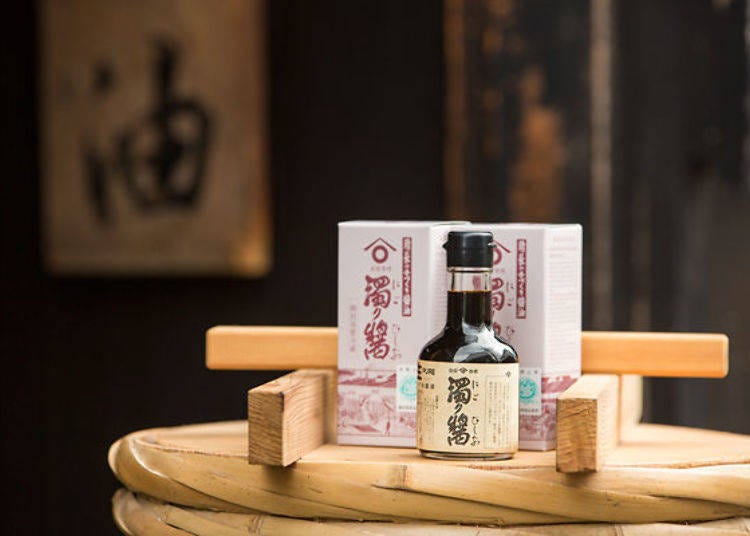
The soy sauce is 100% handmade, without the use of any additives. Notwithstanding the difficult conditions for soy sauce makers these days, Kadocho’s strong track record and experience ensures it remains highly popular with customers who value its taste and who want guaranteed safety and quality in their food. Recently, it has taken inquiries from restaurants and food stores in places such as Paris and Hong Kong, as well as Japan.
On this occasion I’m particularly interested in seeing round the production area and the storehouse. Makoto’s son and the seventh generation owner of the business, Tsunenori Kano, shows me round. We go to the warehouse. It is under continual repair and maintenance but it has been used continuously ever since the Edo period.
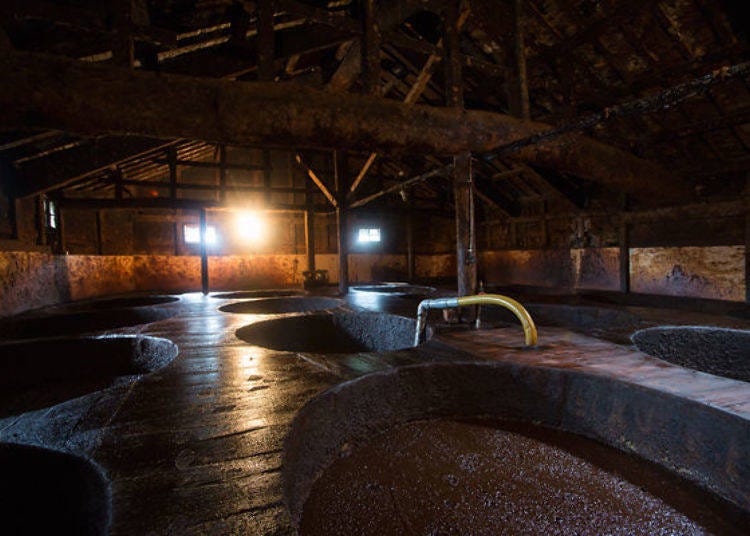
“The most important thing in soy sauce production is the yeast fungus. Our job is to create the right environment for the yeast bacteria to work.” Inside the storehouse the ceiling, walls, beams and barrels are just as they used to be when the business was first founded. Kadocho’s main asset is its “yeast in house” found throughout the storehouse. According to Tsuenori this yeast, which has been here for many years, is what gives Kadocho’s soy sauce its unique flavor.
“When I visit other long-established soy sauce and miso manufacturers, I always check to see if there is mold on the roof.” It’s an indicator of how good the yeast they use is.”Spoken like a true craftsman!
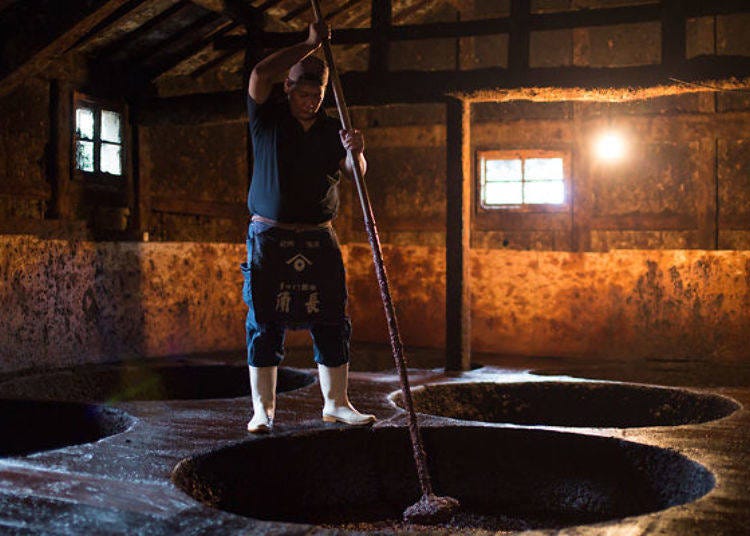
Of course, making good soy sauce is about more than just the yeast. You have to keep a constant eye on the conditions like the temperature, as well as continually checking the inside of the barrels...
I’m surprised at how long soy sauce takes to mature. “This barrel is four years old. This one is seven years old,” Tsuenori tells me nonchalantly. Kadocho’s Moromi soy sauce is condensed and barrel-aged for at least four years. All of Kadocho’s soy sauces are distinguished by their intense, full-bodied flavor.
Making soy sauce is a lengthy process. It takes time and effort. I’m so impressed at the commitment and attention to detail here!
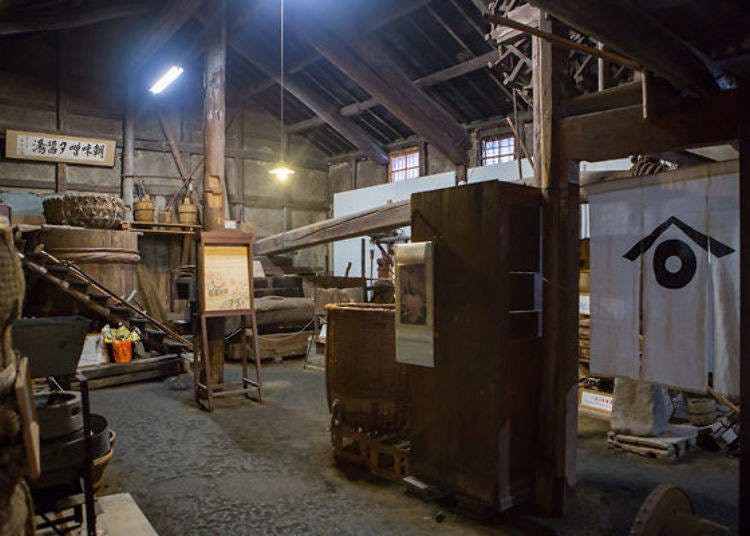
“I’d really like to have a look round the warehouse today. Is it open to anyone if they want to have a look?” I needn’t have worried. The Craftsman’s Warehouse and the Soy Sauce Museum are open to the general public. So you can enjoy the obscure world of soy sauce making even if you can't see the product actually being made.
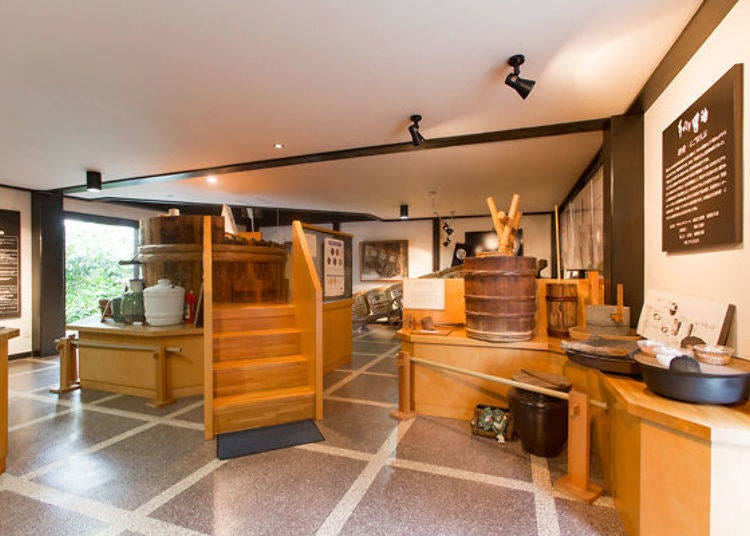
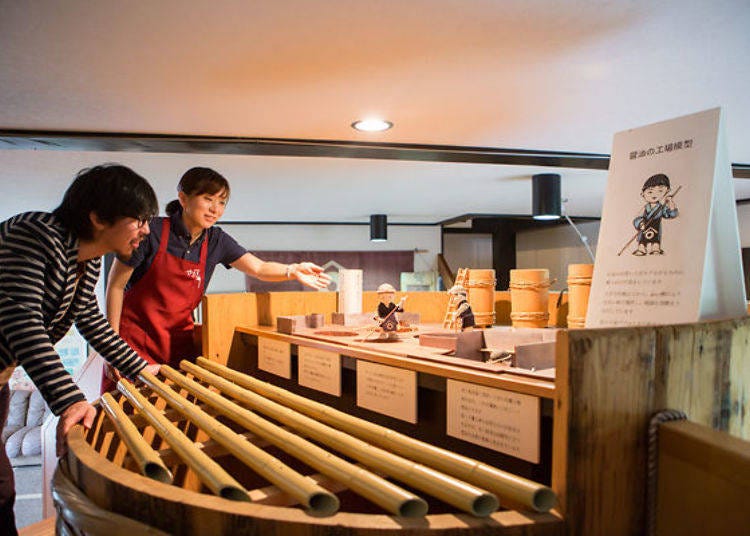
The Craftsman’s Warehouse is a building that was once used to store soy sauce, and various items used for shoyu production since ancient times are on display here. The Soy Sauce Museum explains the history of soy sauce and the manufacturing process. Staff can give you more detailed information if you’re interested. (Contact the museum in advance since staff are not always available during the week).Whatever you do, you’re bound to be fascinated by Kadocho and the valuable exhibits on display here. Admission is free, so please do make the effort to visit!
-
Kadocho角長
- Address 7 Yuasa, Arida District, Wakayama Prefecture
- Phone Number 0737-62-2035
Opening hours: Kadocho: 9:00AM - 5:00PM; Craftsman’s Warehouse (Folk Museum) 9:00AM - 5:00PM; Soy Sauce Museum: Every Saturday 1:00PM - (Advance reservations required on other days)
Holidays: N/A * Craftsman’s Warehouse and Soy Sauce Museum closed on Sunday
Jinburo: Get a feel of old Japan at this historic bathhouse museum
After my visit to Kadocho, Mr. Hanbe tells me there’s one more place he wants to show me. This is Jinburo Bathhouse Museum.
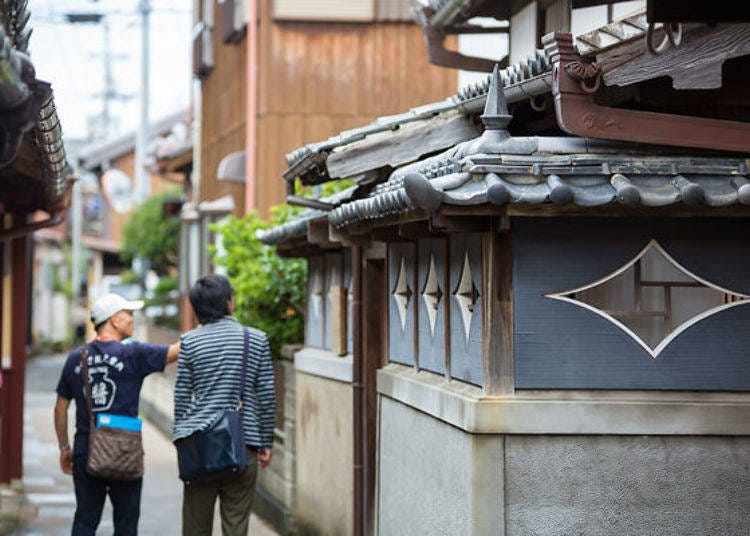
Walking along the maze-like alleyways characteristic of Yuasa, we come to a building that looks like a cross between Western and Japanese architectural styles.
“This used to be a public bath run for four generations from the end of the Edo period through to the bubble period of the 80s. I don’t know when exactly, but it’s said that this building was built in the early Meiji period,” says Mr. Hanbe.
Indeed, as is typical of Japanese buildings, the building has a refined atmosphere.
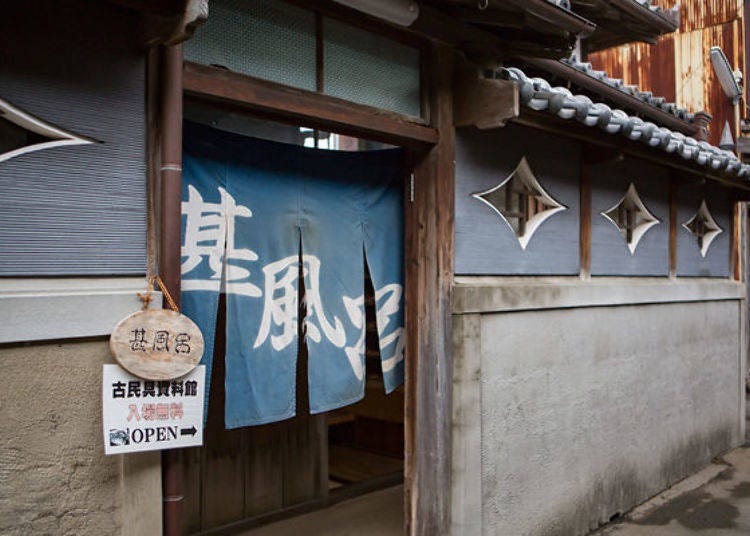
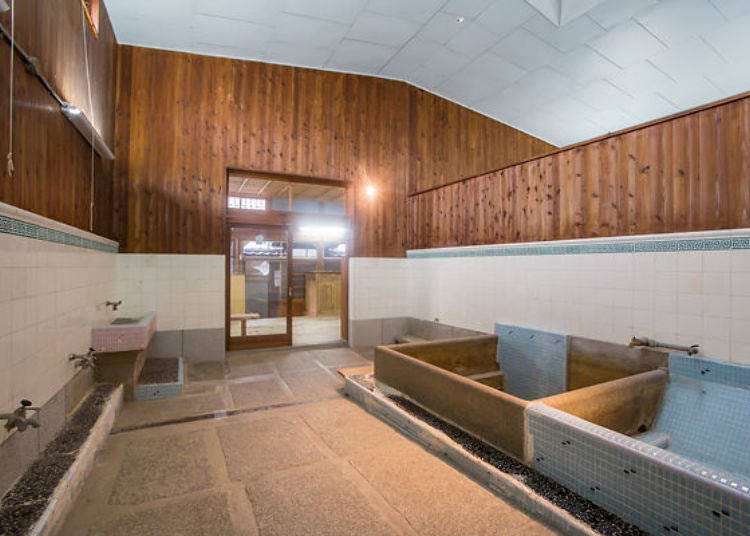
Jinburo is now a museum. You can see the attendant’s booth, the baths and the old bathing area as well as everyday items and implements from the Meiji and Showa periods in the main building, where the owner used to live.
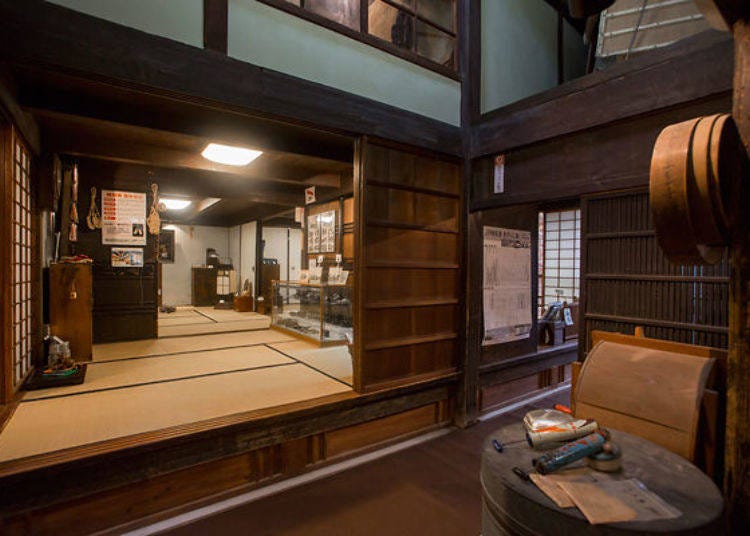
People of an older generation will find things such as a hand water pump or old-style telephone quite nostalgic.

You can spend hours just browsing here!
-
Jinburo Bathhouse Museum銭湯跡歴史資料館 甚風呂
- Address 428 Yuasa, Arida District, Wakayama Prefecture
- Phone Number 0737-20-2033
Opening hours: 10:00Am-4:00PM (Closed for lunch 12:00-3:00PM on weekdays)
Admission free
Closed: Wednesday (If a public holiday falls on Wednesday, the museum is closed on the following day), New Year holiday
Our walk was a good mix between taking in the quiet atmosphere of the town and seeing some exquisite sights. Mr. Hanbe helped me find plenty of interesting things to see in Yuasa’s Historic Preservation District, but because people still live here, it doesn’t have the brash feel of a tourist area. You can just walk around the town at your leisure.
The place is alive with history and tradition. It’s fascinating to think about how people’s lives have changed with the tomes here. It’s well worth a visit!
-
Yuasa Preservation District for Historic Buildings湯浅伝統的建築物群保存地区
- Address Yuasa, Arida District, Wakayama Prefecture
0737-63-2525 (Yuasa Town Hall)
Text by:Advision
- Area
- Category
*Prices and options mentioned are subject to change.
*Unless stated otherwise, all prices include tax.
Limited time offer: 10% discount coupons available now!
Recommended places for you
-
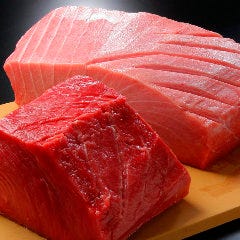
Kamesushi Sohonten
Sushi
Umeda, Osaka Station, Kitashinchi
-
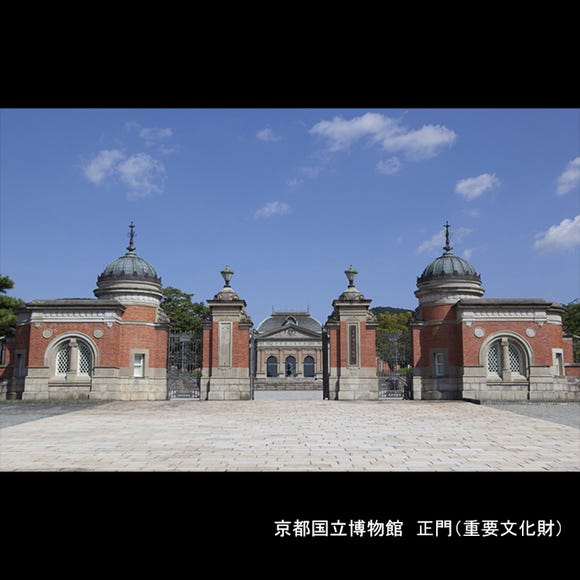
Kyoto National Museum
History Museums
Kyoto Station, To-ji Temple
-
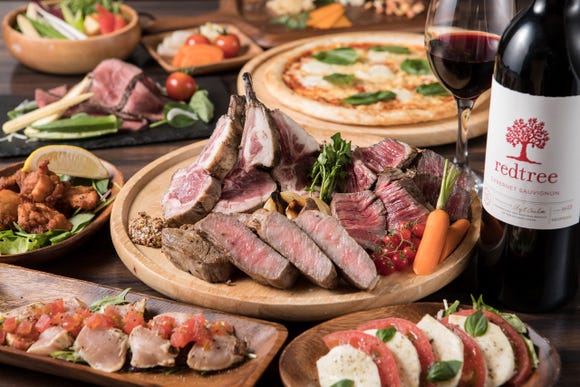
Jukuseiniku-to Namamottsuarera Nikubaru Italian Nikutaria Sannomiya
Izakaya
Kobe, Sannomiya, Kitano
-
Menu
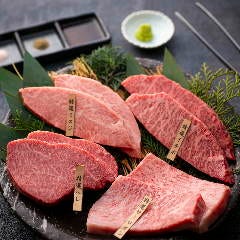
ISHIDAYA Hanare
Yakiniku
Kobe, Sannomiya, Kitano
-
Goods

Yoshida Gennojo-Roho Kyoto Buddhist Altars
Gift Shops
Nijo Castle, Kyoto Imperial Palace
-
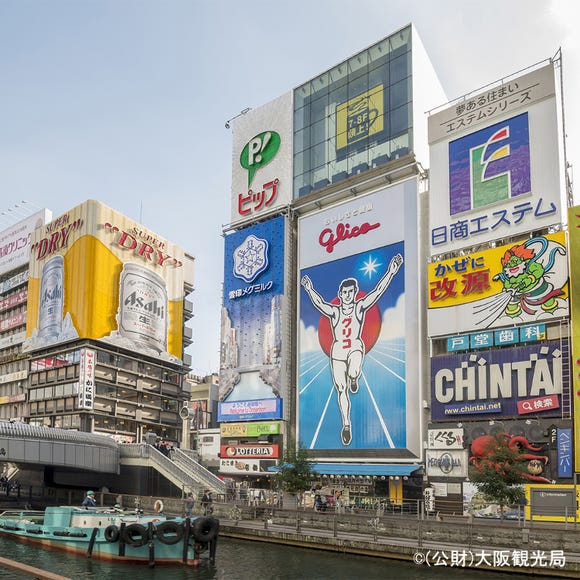
Dotonbori
Other Sightseeing
Namba, Dotonbori, Shinsaibashi
-
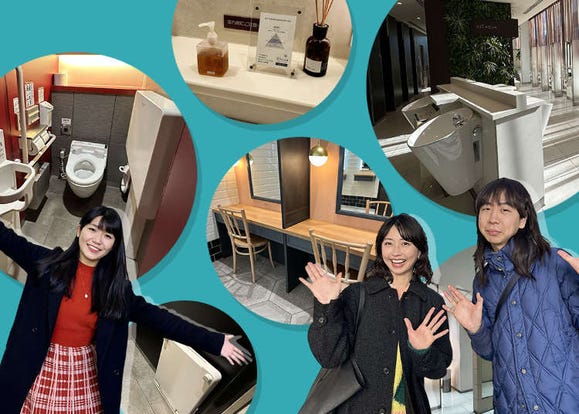
Comfy Toilet Map for Osaka Station: Can You Get Around with a Stroller? Are There Clean Powder Rooms?
-
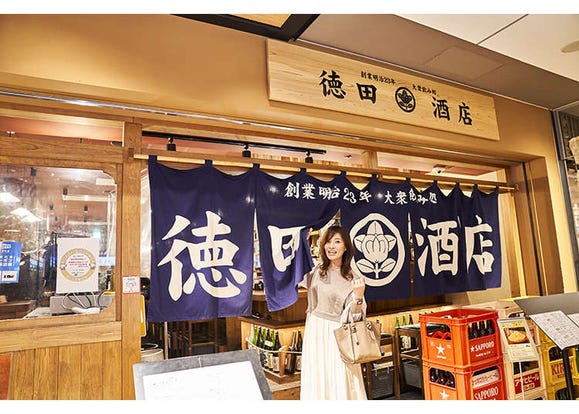
Enjoy the Enchanting World of Osaka Station City: Solo-Friendly Bar-Hopping!
-
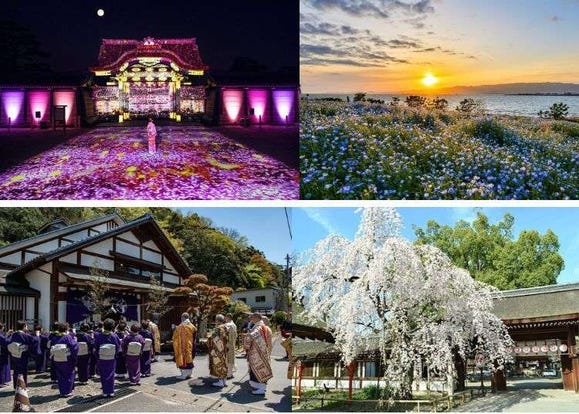
What to Do in Osaka & Kyoto in April 2024: Enjoy Japan's Exciting Spring Events
-
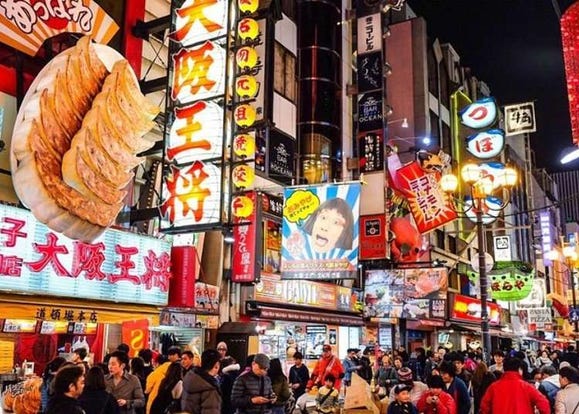
14 Unique & Fun Osaka Food Tours to Enjoy in 2024
-
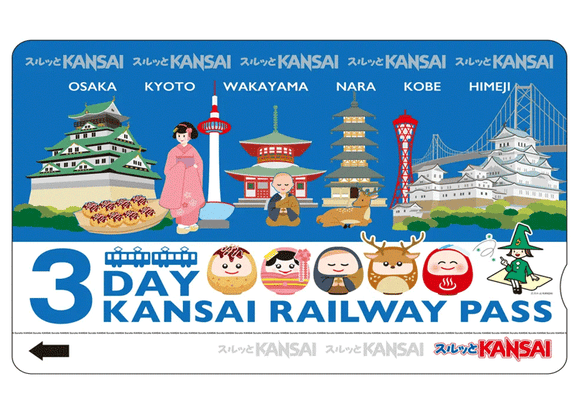
Everything You Need to Know About the Kansai Railway Pass
-
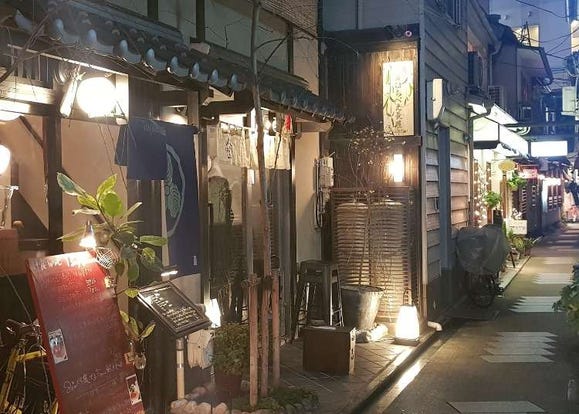
13 Unique & Fun Kyoto Food Tours to Enjoy in 2024
-
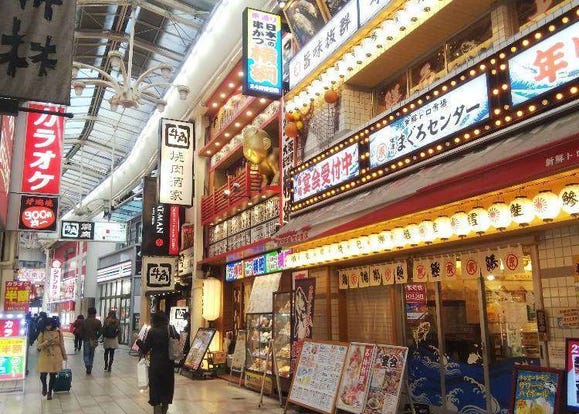
5 Popular Things to do in Umeda - Osaka's Central Area!
-

Kyoto Gion Walking Guide: Top 10 Must-See Areas for First-Time Visitors
-
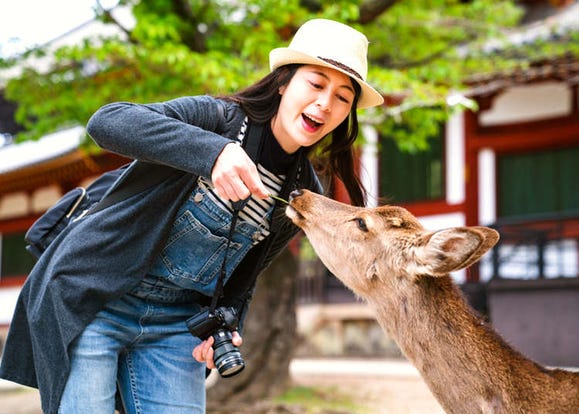
First Time in Nara: Where To Go And What To Do in Japan's Famous City
-
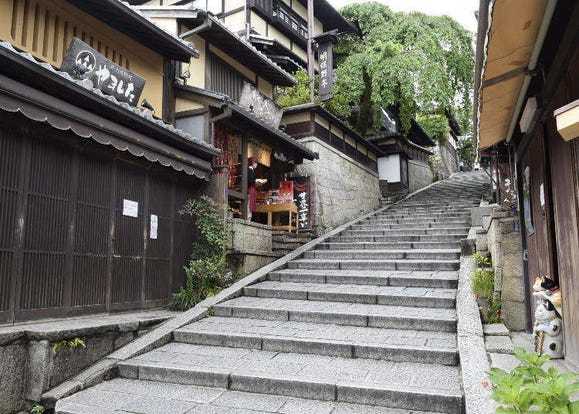
Ninenzaka and Sannenzaka: Walking Guide to Kyoto's Best Old Streets
-
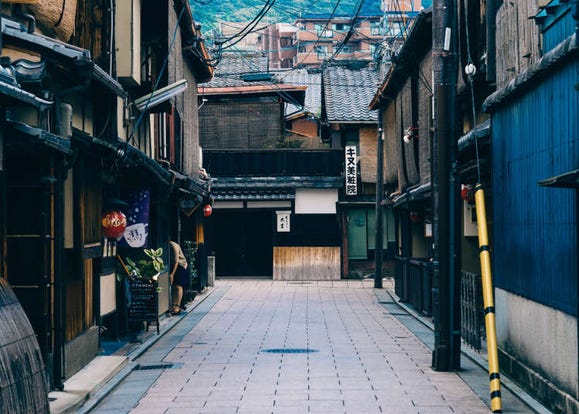
Can’t Get Where You’re Going in Kyoto? What do “Agaru” and “Sagaru” Mean? Kyoto’s Unique Address System!
-
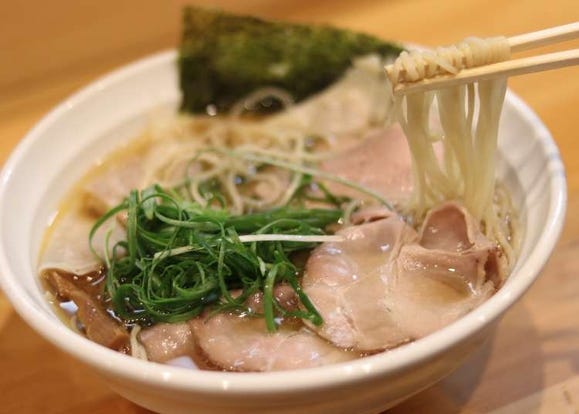
Ippudo Osaka and More: These 5 Ramen Restaurants in Osaka Are Going Viral
- #best gourmet Osaka
- #things to do Osaka
- #what to do in kyoto
- #what to bring to japan
- #best gourmet Kyoto
- #new years in Osaka
- #what to buy in nanba
- #Visiting Osaka
- #onsen tattoo friendly arima
- #daiso
- #Visiting Kyoto
- #best japanese soft drinks
- #japanese fashion culture
- #japanese convenience store snacks
- #japanese nail trends













